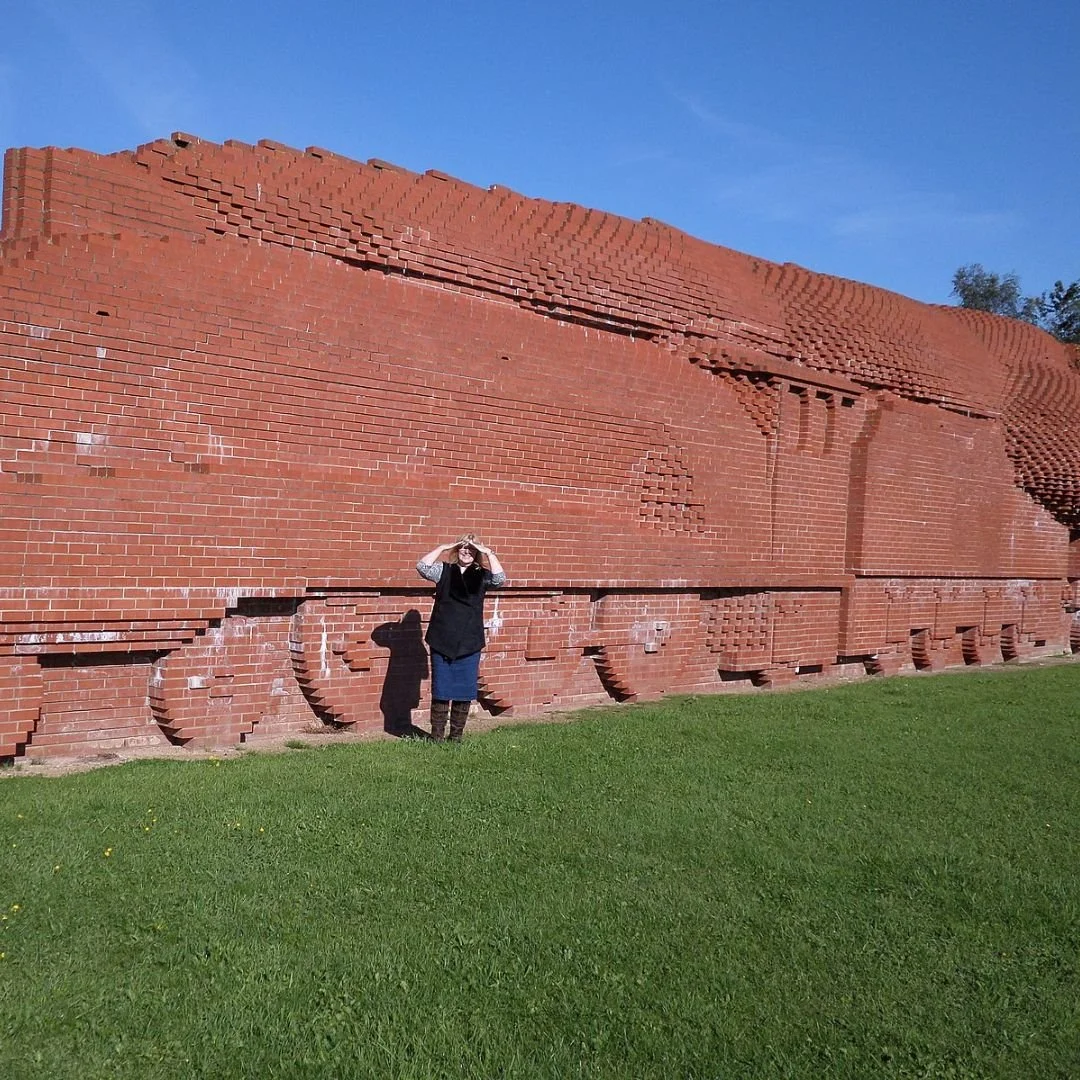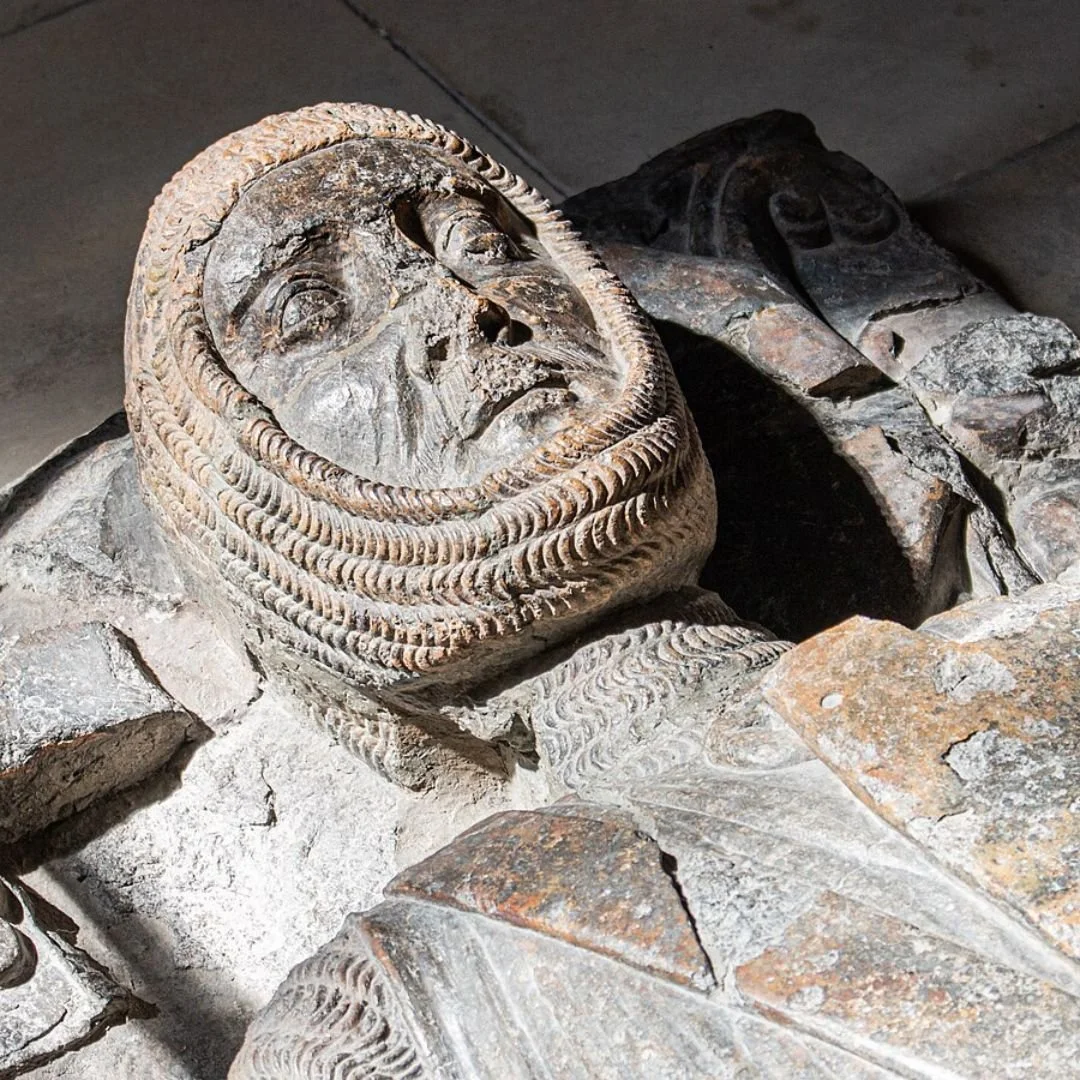The Darlington Brick Train: Made From 185,000 Bricks!
This huge train in Darlington was carted using 185,000 red bricks.
Officially titled Train, this iconic piece of public art is a life-sized tribute to the region's pioneering railway heritage.
The concept for this monumental sculpture was the brainchild of renowned Scottish artist David Mach.
Known for his large scale, dramatic installations using mass produced, everyday objects, Mach brought his signature style to a material fundamental to construction: the brick.
The project was commissioned in 1994 and unveiled in 1997, located adjacent to the A66 road on the Morton Park shopping area, a fitting placement to catch the eye of thousands of travellers daily.
The structure is a faithful, life-sized model of the famous steam locomotive LNER Class A4 No. 4468 Mallard.
The Mallard is an engineering legend, as it holds the world record for the fastest steam locomotive, reaching a speed of 126 mph (203 km/h) in 1938.
It’s arguably the most famous steam locomotive in the world, designed by Sir Nigel Gresley.
This sleek, Art Deco-styled "Pacific" class engine achieved a validated speed of 126 mph on the downhill gradient of Stoke Bank, a record that remains unbroken.
The Mallard and its sister A4 locomotives were built for high-speed expresses on the East Coast Main Line, featuring a distinctive streamlined casing honed in a wind tunnel to reduce drag.
Painted in a Garter Blue livery (example pictured above) the Mallard symbolises the golden age of British railway speed and engineering prowess, and is today preserved as the centrepiece of the National Railway Museum in York.
Mach's design in Darlington captures the locomotive in a moment of powerful action, appearing to have just hurtled out of a tunnel, with a massive, billowing cloud of 'steam' trailing behind it, all rendered meticulously in brick.
The sheer scale of the Brick Train is what makes it so breathtaking. It is a work of immense proportion and weight.
The sculpture is approximately 39.6 metres (130 ft) long and 7 metres (23 ft) high - and it is estimated to weigh a colossal 15,000 tonnes.
More than 185,000 Accrington Nori bricks were used in its construction, alongside 170 cubic metres of concrete for the hollow core.
It took a dedicated team of 34 bricklayers, labourers, and apprentices 21 weeks to build, a testament to traditional skill meeting artistic vision.
The structure is hollow, a design feature used to incorporate unique elements: local schools placed time capsules inside, ensuring the monument also serves as a container of contemporary history for future generations.
In a unique and thoughtful nod to ecology, the Brick Train incorporates features to support local wildlife.
Twenty special "bat bricks" were built into the structure, providing small gaps and roosting spaces designed to encourage bats, specifically the endangered Pipistrelle species, to take up residence inside.
This practical feature subtly transforms the artwork into an unusual, colossal habitat.
Like many ambitious public art projects, the Brick Train was not without controversy.
At the time of its commissioning and construction, critics debated its high cost, reported to be around £760,000, which was funded largely by the National Lottery Heritage Fund, with contributions from Darlington Borough Council and the Morrisons supermarket group.
Some local voices dubbed it a "monstrous white elephant" and questioned the expenditure.
However, over the decades, the sculpture has successfully silenced its critics.
It has firmly established itself as a beloved local landmark, a key photo opportunity, and a powerful symbol of Darlington's profound connection to the rail industry, a town that was a key terminus for the Stockton and Darlington Railway, the world's first public railway to use steam locomotives in 1825.
It now serves as a focal point in the run-up to the 2025 bicentenary celebrations of that momentous event.
The scale and open location of the Brick Train, however, present continual maintenance challenges.
The most frequent issues have been graffiti and general surface degradation, which require regular cleaning and professional restoration to prevent the porous brickwork from absorbing the paint or pollutants.
More seriously, the 'steam' cloud section, composed of loosely stacked bricks, has been a target for climbers and vandals, leading to bricks being dislodged or tossed, thus requiring structural checks and re-stacking.
The hollow core, which houses the time capsules, has also been compromised on occasion.
Furthermore, the surrounding landscaped area, which is essential to the sculpture's visual context, suffers from littering and vegetation overgrowth, requiring dedicated local efforts to keep the setting worthy of the historical monument it represents.
Thanks to the dedicated and ongoing efforts of the local council and community groups, the monument is well-maintained today.
How to visit the Darlington Brick Train? Well, the full address is: A66, Darlington, DL1 4PH, United Kingdom.
If you enjoyed this blog post, please follow Exploring GB on Facebook for more!
Don’t forget to check out our latest blog post below!
Thank you for visiting Exploring GB.


















